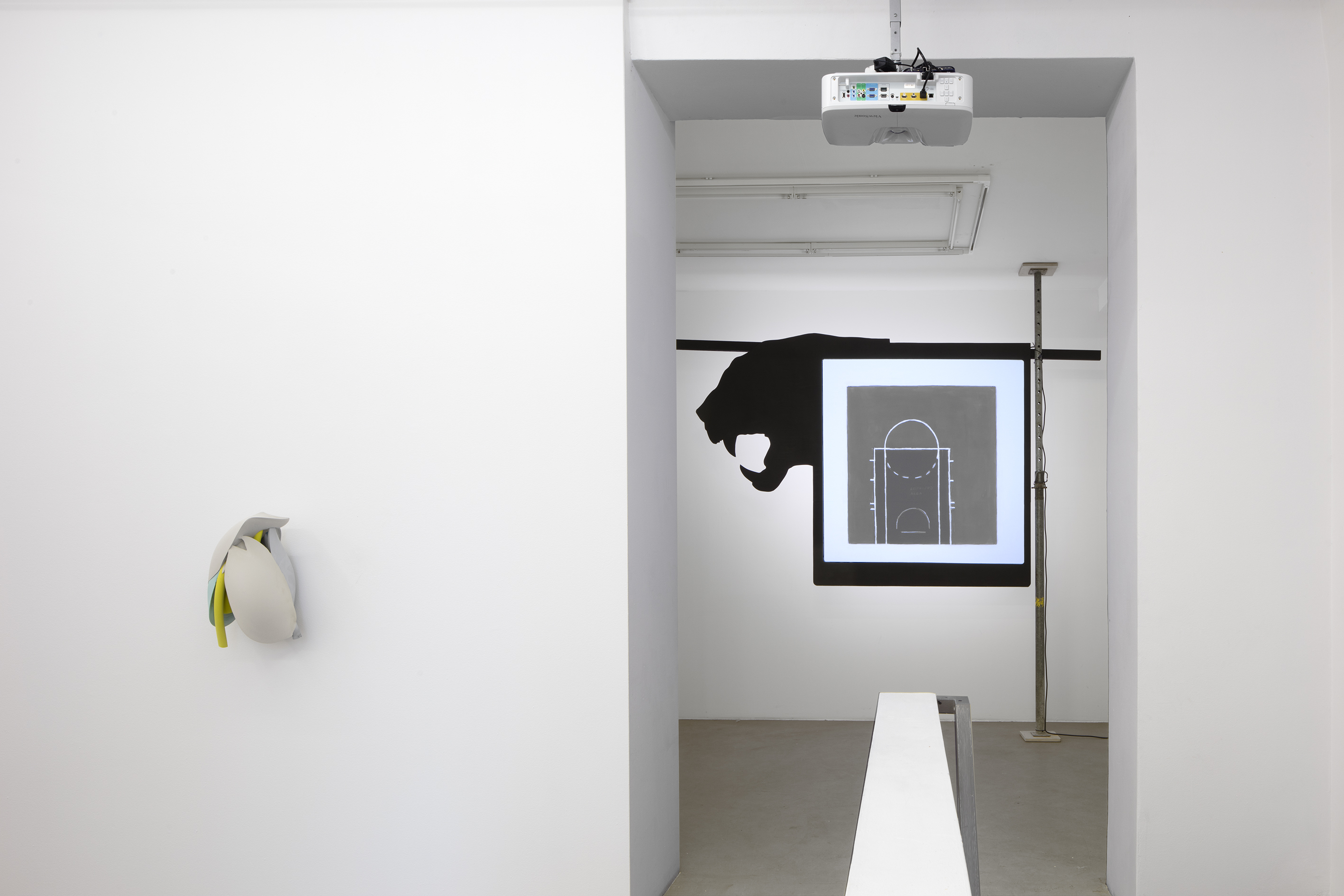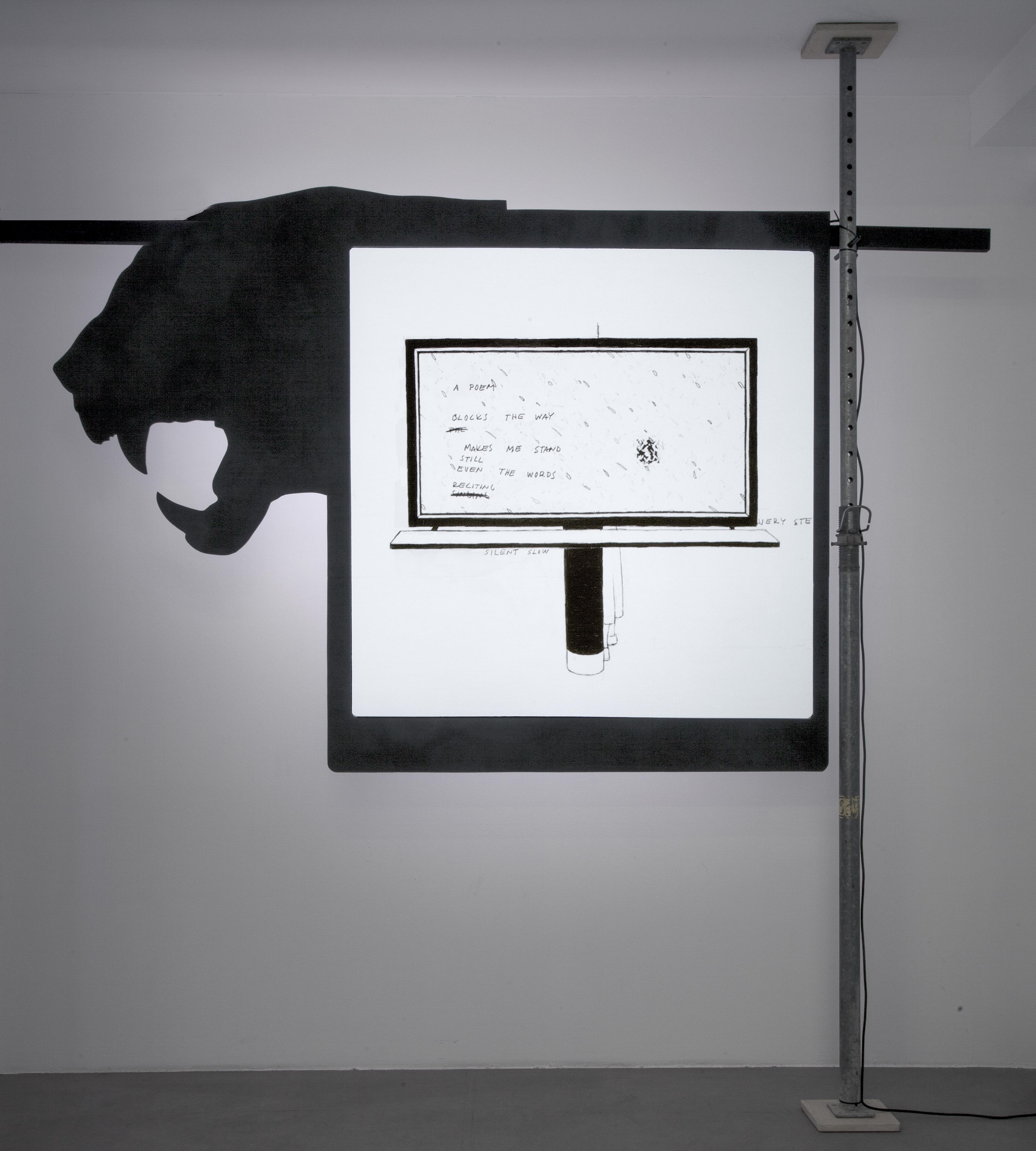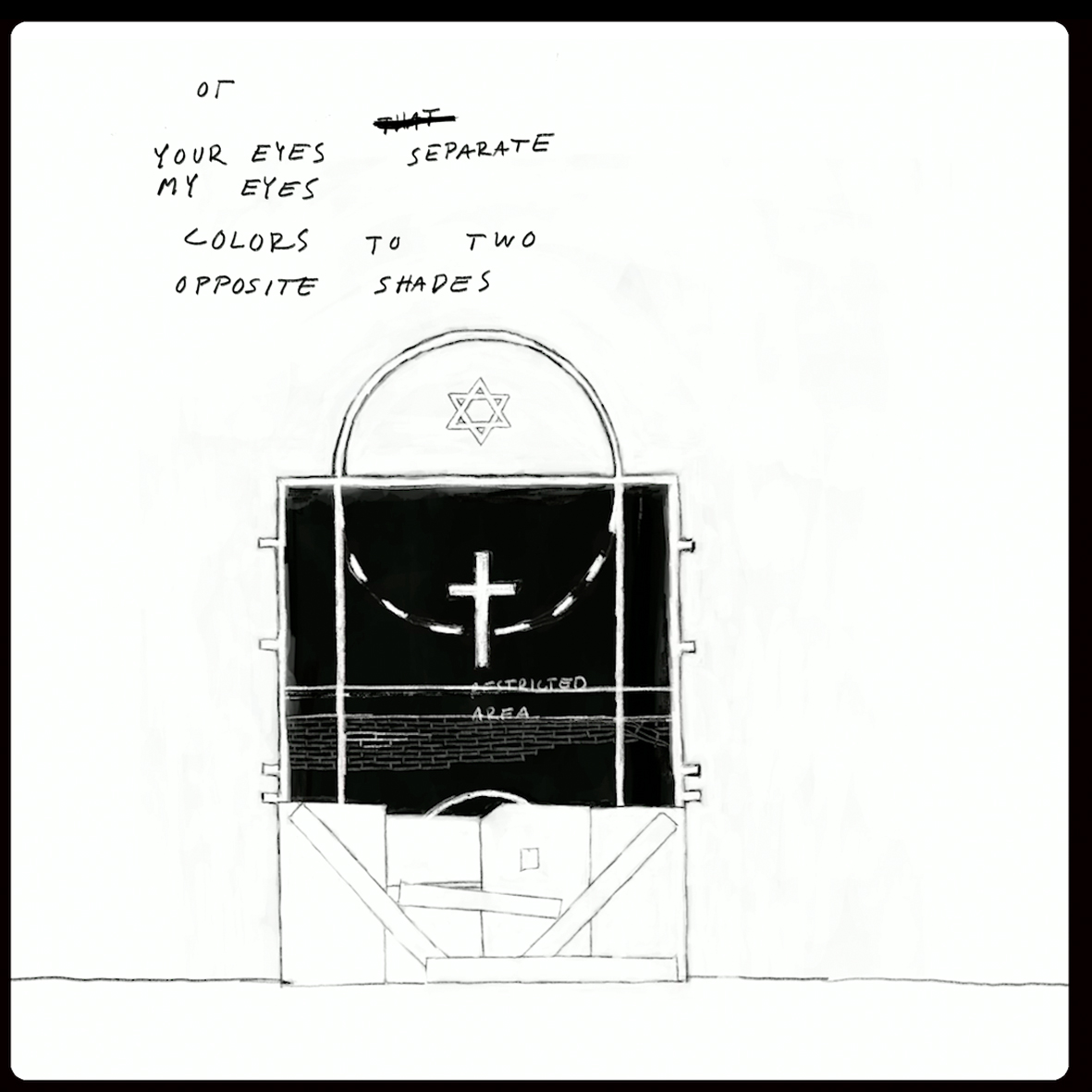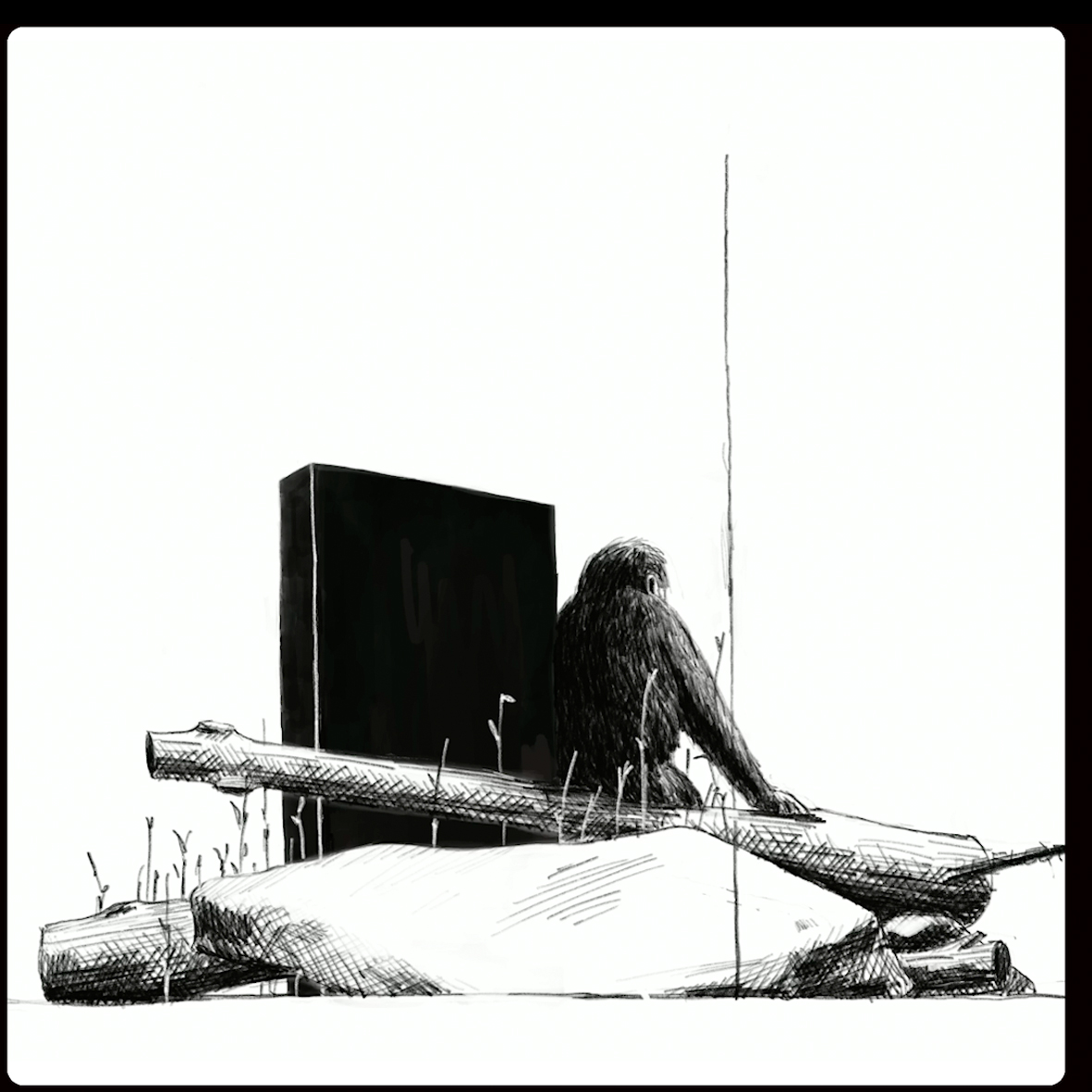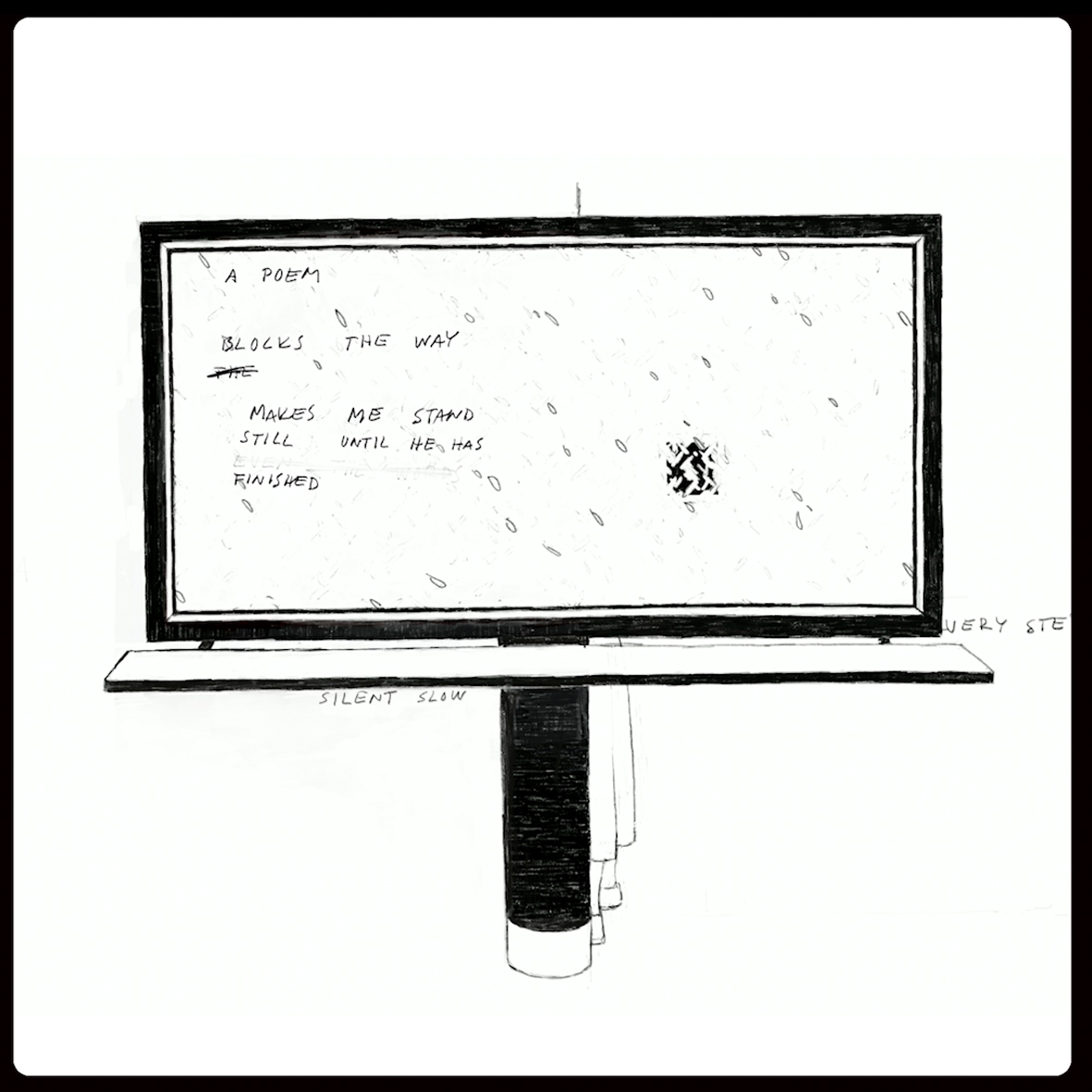Everything Else, 2018
Animated drawing projected on painted plywood, center, led lights, laminated veneer lumberDuration 8:06 min, silent, HDThe drawn animation ’Everything Else’ in square format is projected on a surface resembling a billboard or a building site hoarding. Its abstract elements are embedded among excerpts of text and highly figurative elements. In the animation, the image takes shape before the viewer as the story proceeds. The work feels highly unrestricted, offering associations in many directions. But why a drawn animation? In an animation, the artwork can be made while it is being displayed. Instead of a visual recording, the image is the working process that leads the narrative along. Drawing is slow, requiring choices and each change made to the image is painstaking work. Time is highly concrete when one is drawing, each moment of the image must be made physically, a bit like carving time. ’Everything Else’ combines references to minimalism, sports, poetry or, for instance, the last Black Panther film. How did you choose the motifs for this work?It is based on my artist residency in Harlem in New York City. The city is highly fictive, because perceptions of it have been shaped by television series and films. There is a strong feeling in the city that you’re part of a performance. In Harlem, the African-American culture of the setting underscored my role as a tourist from afar.In the animation, abstract forms are associated with structures and locations of stagecraft. It includes the imagery of a zoo, exhibition spaces, films and basketball scoreboards. The location was often chosen for its theatrical nature. I found a church near the residence with Jewish and Christian symbols alongside each other on the wall. At present the only part of the building that remains is its façade facing the street. I discovered that this building, ‘Childs Memorial Temple Church of God in Christ’, was the venue of Malcolm X’s funeral service. Malcolm X was a Muslim. The building also has a history as a theatre and restaurant, its role having changed according to needs and users. It has not had any permanent character. The same is true of a work of art when it is viewed. The same form acquires highly different content depending on who is using it, the starting points of his or her work, and in turn who is viewing it and their background. The black square is transcendental, concrete or ‘something else’, all at the same time.This is about loading images with content that can even be conflicting. Something appearing to be empty acquires meanings through juxtaposition. Text alongside an image constructs a level alternately combining with the image and separating from it, and the viewer’s task remains to fill in the gaps. The narrative is constructed in the work also through images, but mainly by way of the viewer’s own associations.You process text like the image. Text is also erased, cut and covered like the other elements of the image.The purpose of text is to create the impression that what is written is not absolute but can continue just like an image does. Text forms sentences that could transform into something else. Writing by hand gives text an identity, a handwriting. Writing by hand is drawing, part of the visual expression of the animation. Words acquire new meanings as they are juxtaposed with different words throughout the area of the image. The text seeks its own form. There are errors and they are corrected as if no complete sentence will ever be created.

